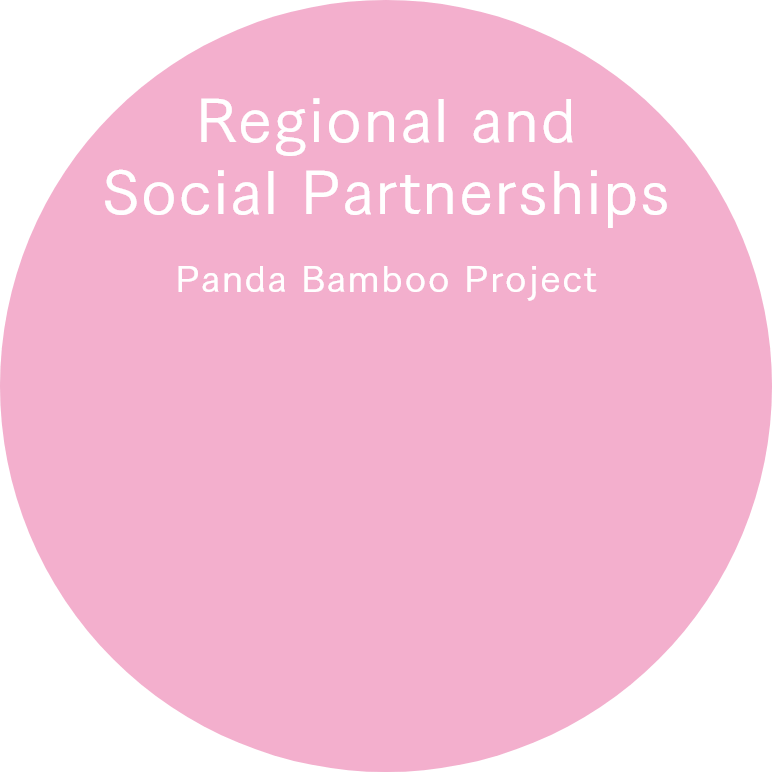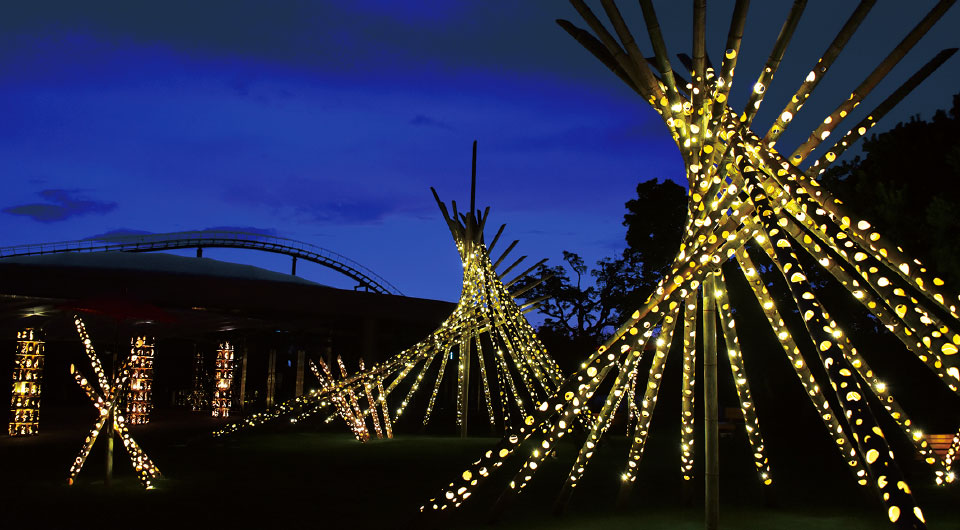

We work to preserve the local environment by offering bamboo as the pandas' main
Back in 1994, our park had fewer pandas, and their diet centered more on specially made panda food than bamboo, so the area around Shirahama provided enough bamboo to cover our needs. However, since 2000 we saw more success with panda breeding and shifted to a more bamboo-centric diet. However, since 2000 we saw more success with panda breeding and shifted to a more bamboo-centric In 2005 we secured new locations to harvest bamboo by establishing a cooperative In the past, we fed our pandas eight tons of bamboo branches and leaves each year In the past, we fed our pandas eight tons of bamboo branches and leaves each year However, we also faced a problem with the waste left behind from bamboo the pandas did not or could not eat. The Panda Bamboo Project was an initiative which sought to solve this waste problem. This project aimed to protect local mountains by turning the bamboo from what ravages the This project aimed to protect local mountains by turning the bamboo from what ravages the forest into food for pandas and also solve issues our society faces by upcycling the waste bamboo which pandas could not or did not eat, as well as panda 's excrement, into useful resources.
Utilizing bamboo resources and creating forests which conserve biodiversity in Kishiwada
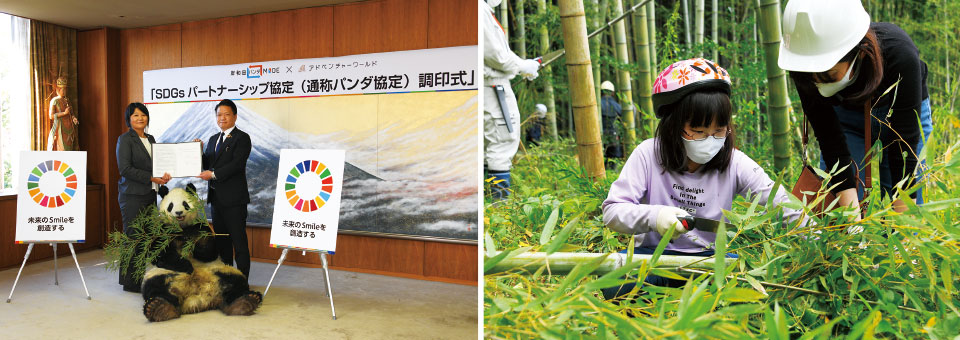
Since 2011 we had an agreement with the city of Kishiwada in Osaka Prefecture to secure bamboo from the hilly regions of the municipality, utilizing it as food for our pandas. In 2020 this agreement was upgraded into the SDGs Partnership Agreement (also known as the "Panda Agreement"), which aims to create a In 2020 this agreement was upgraded into the SDG Partnership Agreement (also known as the "Panda Agreement"), which aims to create a recycling-centric system In 2022, as part of the Adopt-a-Forest program in which businesses can take part in In 2022, as part of the Adopt-a-Forest program in which businesses can take part in environmental conservation efforts, we signed an Adopt-a-Forest Agreement in which we pledge to make effective use of the bamboo groves of Kishiwada ( recycling waste from our bamboo resources) and create forests which preserve biodiversity.
Kishiwada-Shirahama-AWS Co., LTD (Adventure World) Panda Bamboo Smile Agreement for Wide-area Comprehensive Partnership
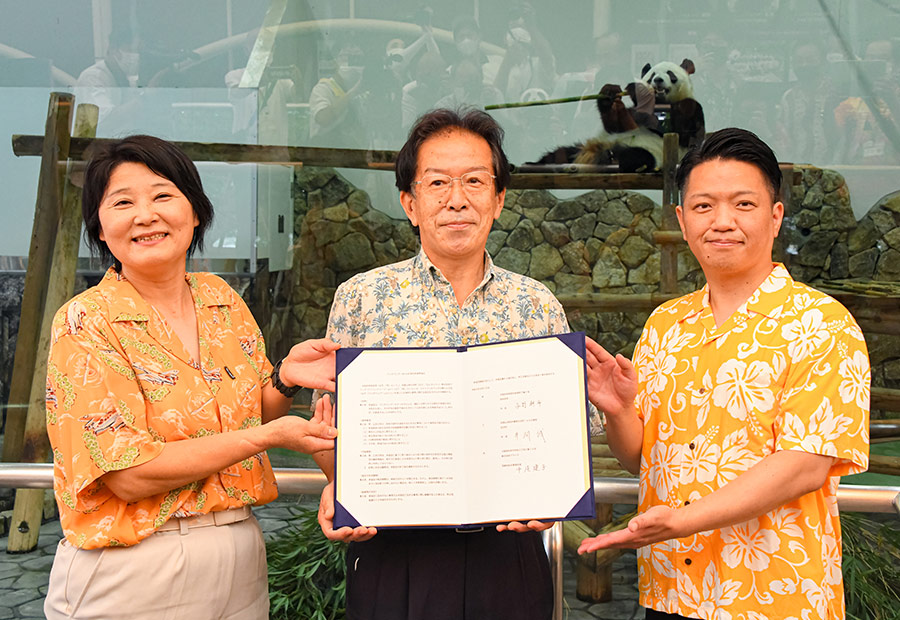
-
To promote revitalization of mutual regional exchanges in a wide range of fields, and with the aim of bringing smiles throughout the region by the co- To promote revitalization of mutual regional exchanges in a wide range of fields and with the aim of bringing smiles throughout the region by the co-operative creation which utilizes the resources and strengths of both public and private entities, Kishiwada City in Osaka Prefecture, Shirahama Town in Wakayama Prefecture, and AWS Co. (Adventure World) concluded the Panda Bamboo Smile Agreement for Wide-area Comprehensive Partnership in August, 2022. We have started a project which prospectively utilizes panda bamboo in initiatives for the mutual exploitation of local resources and the formation of regional ecological cycles.
-
Panda Bamboo Tumbler
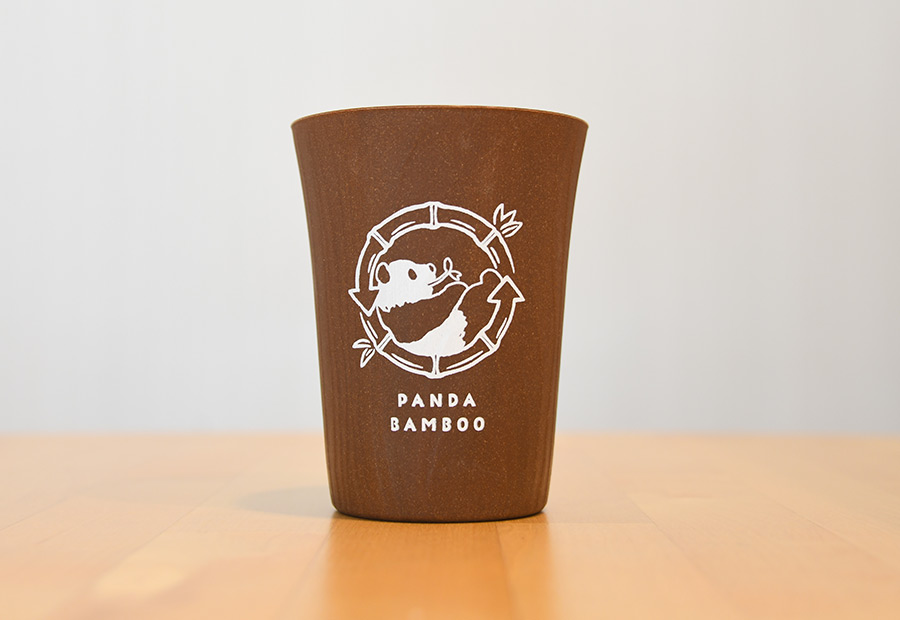
This re-usable cup is made by upcycling bamboo waste left over by our pandas. This "Forest Tumbler" was jointly developed by Asahi Beer and Panasonic as part of efforts to reduce the use of single-use plastics.
-
Panda Bamboo Mobile Workation Spot
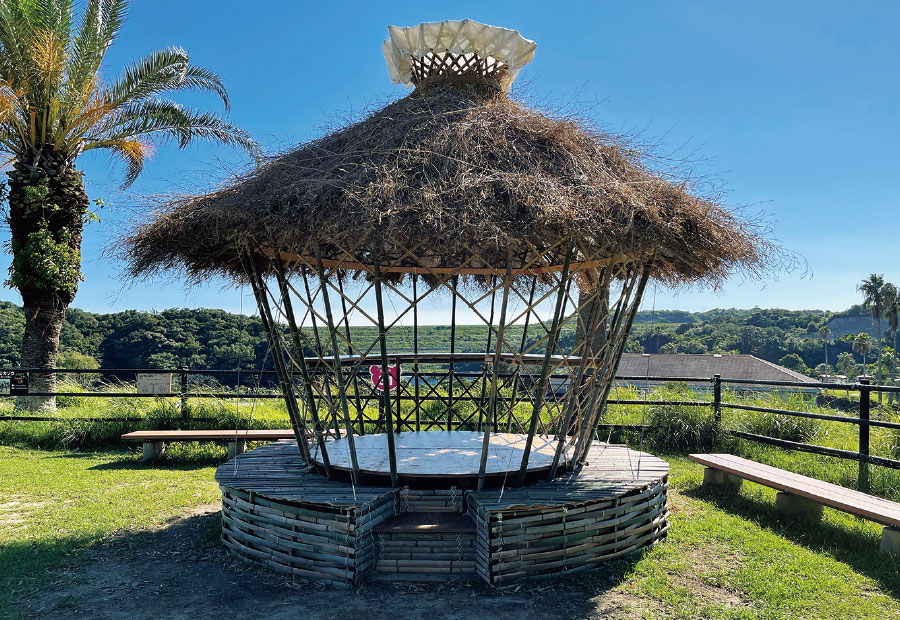
These natural bamboo-made mobile workation spots in Safari World are designed and built in collaboration with Toki Hirokazu's lab at the University of Branches and leaves of bamboo from Kishiwada are fed to the pandas, and the trunks and other parts they do not or cannot eat are used as Branches and leaves of bamboo from Kishiwada are fed to the pandas, and the trunks and other parts they do not or cannot eat are used as structures.
-
Bamboo Crafts and Panda Bamboo
Collaborative Works
Traditional bamboo craftspeople in Kyoto, along with students from the Traditional Arts School of Kyoto, sold bamboo rings and offered workshops. events provided opportunities to reflect on bamboo's role in our culture as well as social issues we face today.
-
Bamboo Lanterns Bringing Smiles
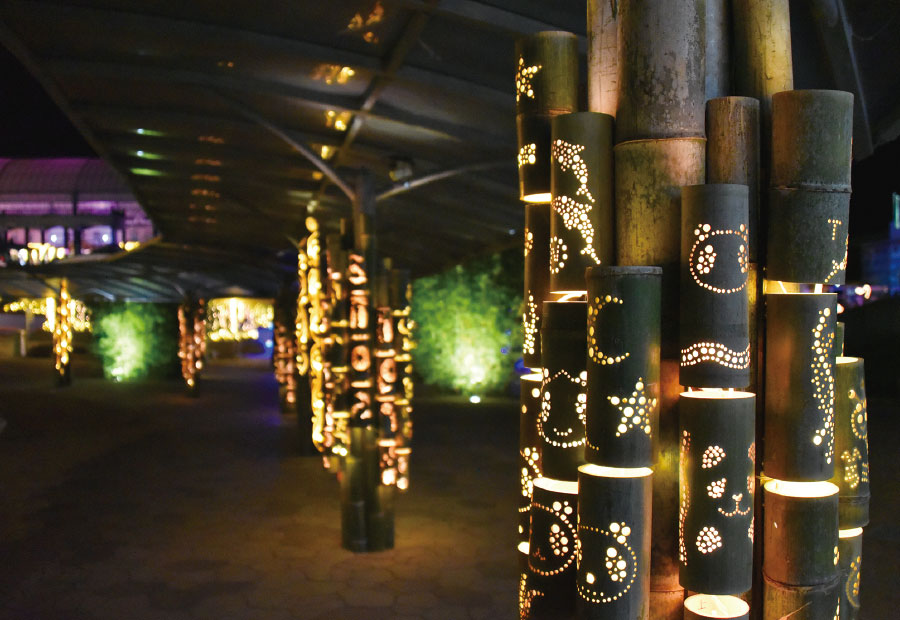
These lanterns were made from bamboo trunks which pandas did not consume, and provided soft, warm light to the park at night. The lanterns were also a driving force in promoting efforts, with a growing number of hotels also putting them on. of hotels also putting them on display. The lanterns were also a driving force in promoting efforts, with a growing number of hotels also putting them on display.
-
Nanki Shirahama Panda Bamboo Expo
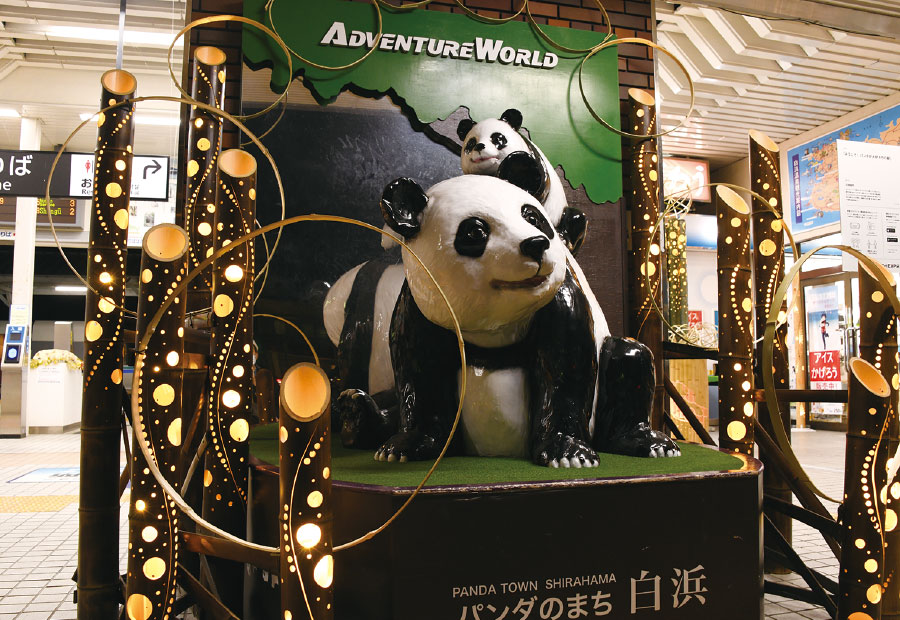
An art and innovation event which brought the whole region together was held from December 2020 to January 2021 to show the world how this "panda town" was Bamboo and panda artwork was exhibited at major locations throughout Shirahama during these art sessions. During the symposium, bamboo researchers, architects, and artists During the symposium, bamboo researchers, architects, and artists spoke about the value and possibilities bamboo offers for our future.
